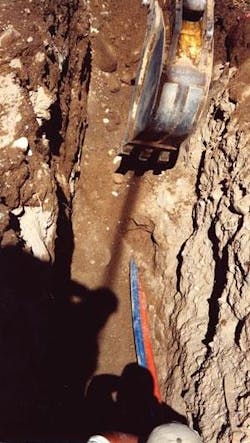The Common Ground Alliance (CGA) recently released a report that concluded approximately 439,000 instances of underground utility lines being damaged by excavations in 2017. That is up 5.5 percent from the CGA’s 2016 report, but the association says that when considering the increased excavation activity in 2017, damages effectively plateaued from 2016.
The CGA describes itself as “dedicated to protecting underground utility lines, people who dig near them and their communities.” The alliance calls its annual report the Damage Information Reporting Tool (DIRT) Report. “The 2017 DIRT Report includes an analysis of when damages occur, by month and day of the week, leading to several findings that can help damage prevention stakeholders best target their public awareness messages,” the CGA added. Specifically, the report found that damages occurring on a weekend were nearly twice as likely to have involved hand tools like shovels and post-hole diggers, than those that occurred on a weekday. Additionally, half of all reported damages occurred between June and September. And August was the month with the most total damages.
“Among all damages reported with an identified and known root cause, the majority—52.2 percent—occurred because of insufficient excavation practices, continuing a trend from recent years where this was the top identified root cause,” the CGA said. Other identified root causes included failure to make a notification (23.5 percent), insufficient locating practices (16.8 percent), miscellaneous (6.5 percent), and insufficient notification practices (1 percent).
Sarah K. Magruder Lyle, the CGA’s president and chief executive officer, commented, “CGA is constantly evaluating the statistical models we use to ensure we are producing the best possible report to guide our public awareness, education, and training efforts in the damage-prevention industry. The latest DIRT Report shows that our collective challenge to reduce utility damage is increasing as excavation activity increases. CGA stands ready to support all damage-prevention stakeholders in addressing this challenge through public-awareness campaigns, best practices, regional partnerships, promotion of new technologies and offering resources to educate state policymakers on the importance of balanced and effective enforcement laws.”
The complete report is available for download here at the Common Ground Alliance website.
